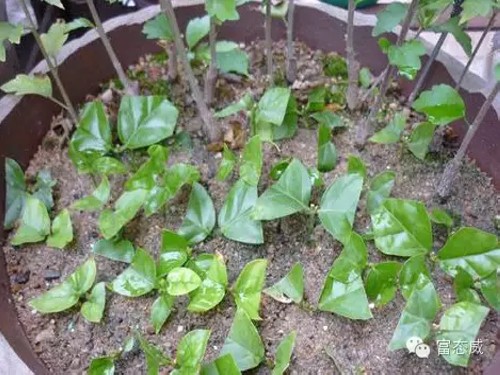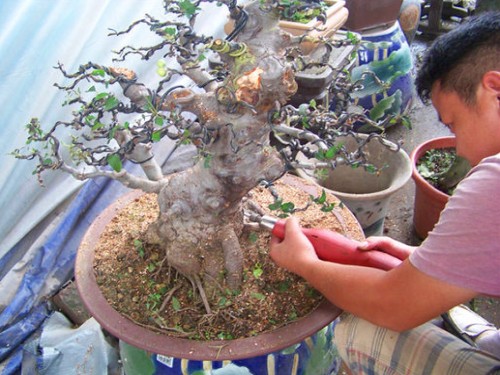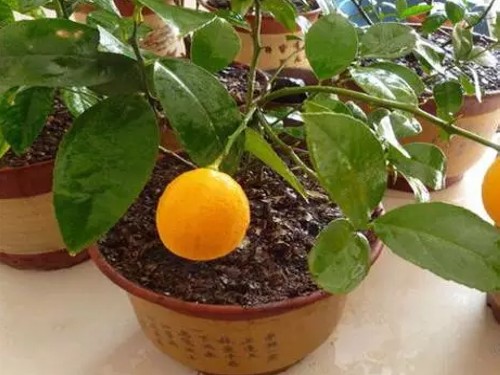Propagation methods of potted Chrysanthemum
Chrysanthemum is a plant of the family Compositae, which is used in medicine with head inflorescence. It has the effect of soothing wind and heat, clearing liver and eyesight, and is mainly used to treat exogenous wind-heat, dizziness and headache. Often drinking chrysanthemum tea has the function of avoiding summer heat and relieving annoyance. Chrysanthemums are cultivated all over the country, among which the famous ones are chrysanthemum from Anhui, Hangzhou white chrysanthemum from Zhejiang, Huai chrysanthemum from Henan, and Qi chrysanthemum from Hebei, which are important Chinese herbal medicines exported to Hong Kong, Macao and Taiwan. Chrysanthemums like warm climate and sunny environment, can be cold-tolerant, afraid of waterlogging, but the seedling stage, flowering stage can not lack of water, chrysanthemum is a short-day plant, sensitive to the length of sunshine, no more than 10 hours of light every day to bud and blossom.
In the bonsai garden of Castle Peak Park, the baby chrysanthemum is growing vigorously and is about to usher in the moment of bloom. What I have never seen is the magnificent scenery of chrysanthemums competing for beauty. Do you want to raise her by yourself and witness the miracle from leaves to flowers? You may want to understand how plants reproduce first.

The reproduction of chrysanthemum has two methods: vegetative reproduction and seed reproduction. Vegetative propagation includes stem cutting, ramet, grafting, striping and tissue culture. Cuttage propagation is usually the main method, which is divided into bud cutting, tender branch cutting and leaf bud cutting.
Split root propagation:
Split root propagation in the field where the chrysanthemum is harvested. Cover the selected chrysanthemum with fertilizer to keep warm through the winter and prevent frost injury from affecting the survival rate. When new buds are issued between April 20 and mid-May the following year, ramet transplanting can be carried out, when the whole root of the chrysanthemum is dug out, the soil is gently shaken off, and then the chrysanthemum seedlings are separated. Each seedling has a white root, the overlong root and the top of the seedling are cut off, and the root retains 6~7cm. 16cm can be kept on the ground, and two plants can be planted in each hole according to the distance of 40cm × 30cm.
Cutting propagation:
The cutting time of cutting propagation is determined according to the characteristics of the variety and the climatic conditions of various places. Cut disease-free, robust new technology as cuttings, cuttings long 10~13cm, seedling bed should be flat, suitable temperature 15: 18 ℃, soil should not be too or too wet. When cutting, first remove all the leaves in the 5~7cm at the lower end of the cuttings, retain the upper leaves, and insert the cuttings into the whole 5~7cm depth. The top of the soil exposed about 3cm, watered, covered with a layer of straw, about 20 days to root.
1. Bud insertion
Cut the outer foot of the plant and insert it in autumn and winter. The standard of bud selection is far away from the plant and the bud head is plump. After the bud is selected, peel off the lower leaves, according to the plant spacing of 3-4 cm, row spacing of 4-5 cm, inserted in the greenhouse or greenhouse flowerpot or bed coarse sand, keep 7-8c room temperature, planted outside after spring. Shoot cuttings: this method is the most widely used. More than April-May cuttage. Intercept tender techniques of 8-10 cm as cuttings, and be good at management after insertion. At the temperature of 18-210C, most varieties took root in about 3 weeks, and the seedlings could be transferred to the pot in about 4 weeks.
2. Ground insertion
The medium can be mixed with garden soil and rice chaff ash of 1 pound 3. Put up a Reed curtain on the high bed for shade. Full-light plug-in bed, if there is automatic spraying equipment, no shade is needed. Leaf bud insertion: cut a leaf with axillary bud from the branch and insert it. This method is only used to breed rare varieties. Ramet: generally before and after the Qingming Festival, the plant is dug up, separated according to the natural shape of the root, and planted in the basin.
Striping propagation:
Striping reproduction takes place on cloudy and rainy days. For the first time, the chrysanthemum branches were crushed before and after Lesser Heat (early July), and every 10cm was covered with wet mud to remove the tips, so that new branches were pulled out from the axils of the sharp leaves, and the second time before and after Greater Heat (late July), the new pumping technique was overwhelmed with the same method as the first time, and the mature human feces and urine were applied once and topped at the End of Heat (late August).
Tissue culture:
Using tissue culture technology to propagate chrysanthemum has the advantages of less useful materials, large number of seedlings, detoxification, disease removal and good characteristics of varieties. The medium was MS+6BA= (6-benzylpurine) 1mg / L + NAA (Tsai acetic acid) 0.2mg / L, pH5.8. Cut the stem tip (0.3-0.5mm), tender stem or bud (9-10mm in diameter) of chrysanthemum into 0.5cm segments and inoculate them. Room temperature 26 degrees Celsius 1 degrees Celsius, add light for 8 hours a day (1000-1500 lux). Callus could be induced after 1-2 months. After 1-2 months, the green shoots will differentiate. Then the differentiated green buds were transferred to White+NAAI-2 mg / L medium and robust roots could be induced after about 1 month. After another month of cultivation, it can be planted outdoors. Half of the original medium is irrigated, which is the key to the success of test-tube plantlets.
Grafting propagation:
In order to make chrysanthemum grow strongly and be used to make "ten brocade" or big chrysanthemum, Artemisia annua Artemisia annuaak or Artemisia annua A.apiacea can be used as rootstock for grafting. The seeds of Artemisia annua were collected at the end of autumn, sown in the greenhouse in winter, or raised in the hotbed in March, moved in the basin or in the field when the seedlings were 3-4 cm high in late April, and spliced in sunny days. Striping: this method is used only when the bud is propagated.
Seed reproduction:
Chrysanthemum seeds germinate slowly above 100 degrees Celsius, and the optimum temperature is 250C. It is sparsely sown from February to April, and can blossom more in the same year under normal circumstances.
Time: 2019-06-10 Click:
- Prev

Modeling Design method of Winter Red Fruit Bonsai
Winter red fruit is generally straight and natural shape, the trunk is erect or slightly curved, branched at a certain height, suitable for varieties with upright tree posture and small branches and leaves, such as winter red fruit and rose autumn. In the oblique dry type, the tree is planted at one end of the pot, the trunk is tilted to the other end, and the inclined trunk is not less than half the total length of the trunk.
- Next

Lemon pot cultivation method-propagation method of potted lemon tree
Lemon is cultivated in the south, so it is suitable to be propagated by grafting. In the north, the cultivation quantity is small, mainly by cutting, and grafted seedlings can also be purchased. The root system of lemon has higher requirements for water, nutrients and soil, and the pot soil should be made into water and air permeability, water and fertilizer conservation, and slightly acidic culture soil. Time of basin operation and basin change
Related
- Fuxing push coffee new agricultural production and marketing class: lack of small-scale processing plants
- Jujube rice field leisure farm deep ploughing Yilan for five years to create a space for organic food and play
- Nongyu Farm-A trial of organic papaya for brave women with advanced technology
- Four points for attention in the prevention and control of diseases and insect pests of edible fungi
- How to add nutrient solution to Edible Fungi
- Is there any good way to control edible fungus mites?
- Open Inoculation Technology of Edible Fungi
- Is there any clever way to use fertilizer for edible fungus in winter?
- What agents are used to kill the pathogens of edible fungi in the mushroom shed?
- Rapid drying of Edible Fungi

